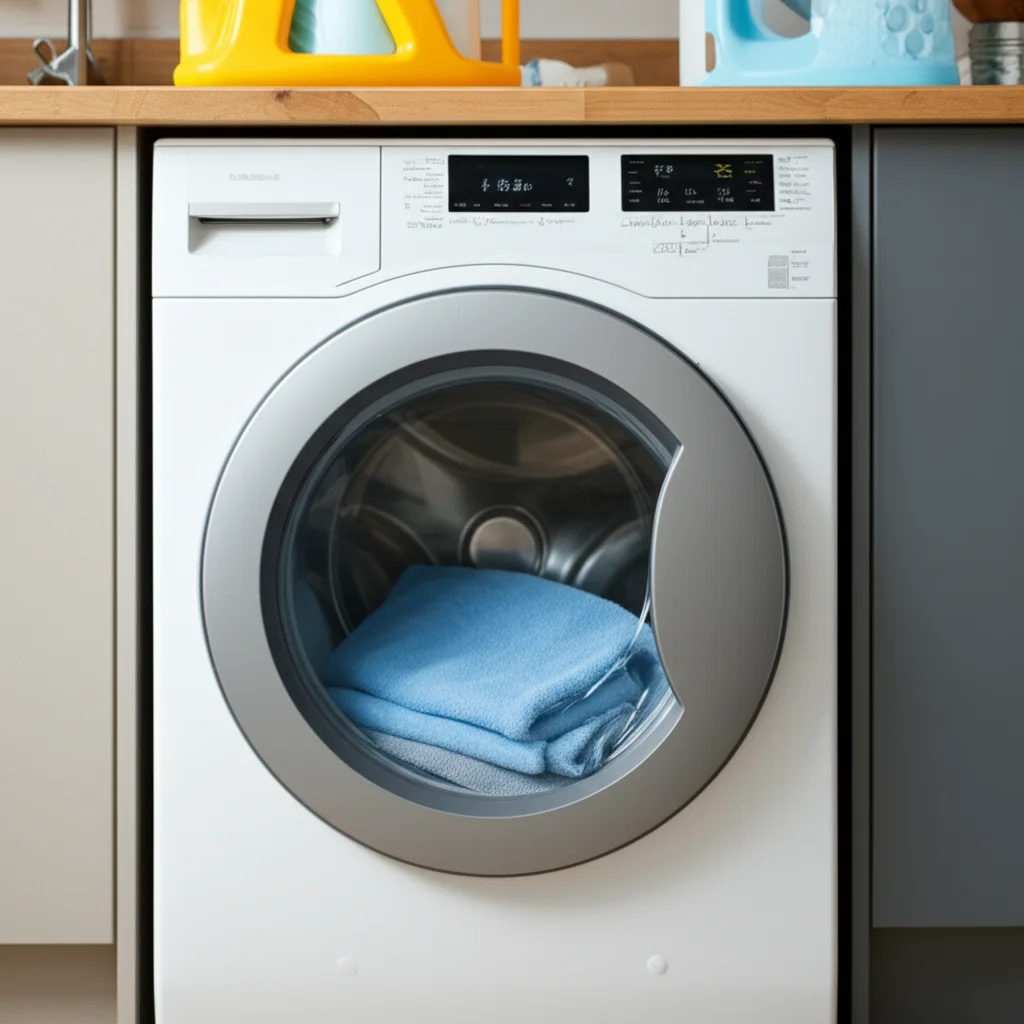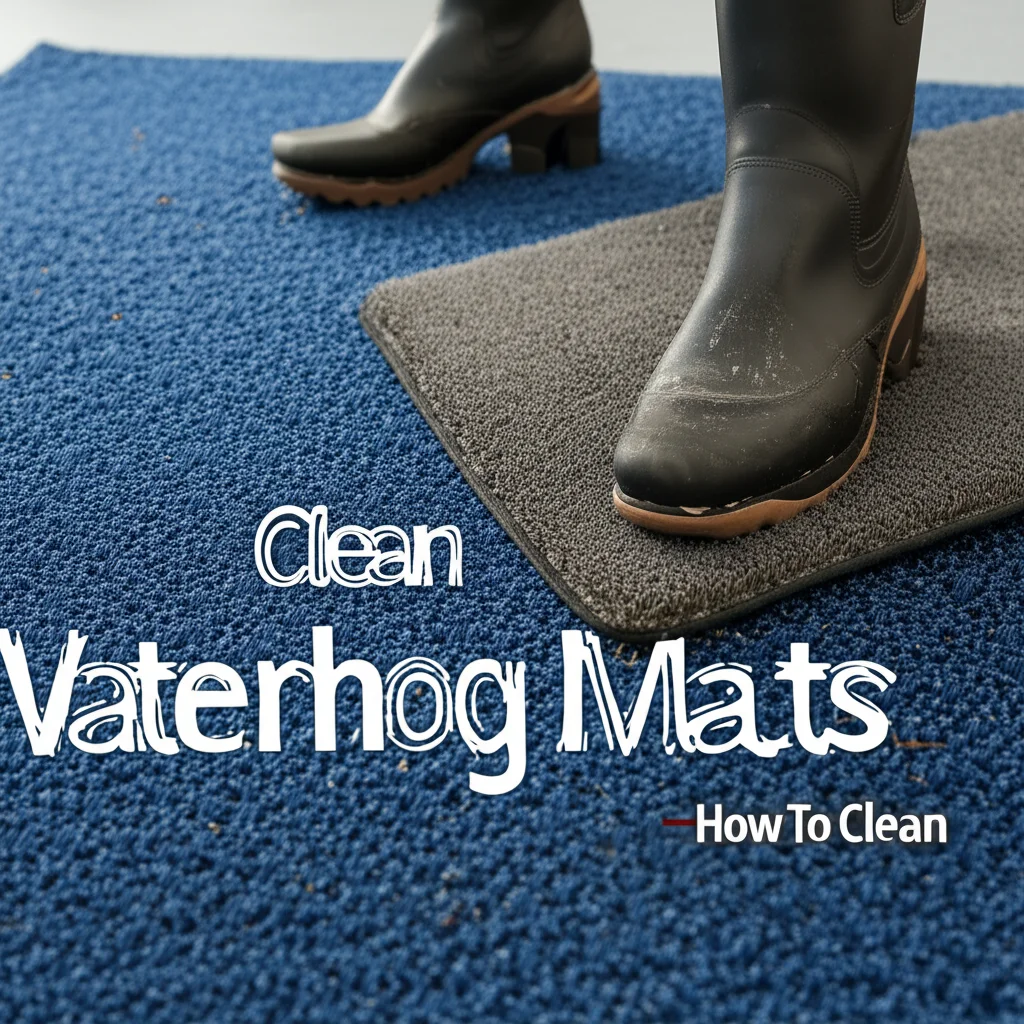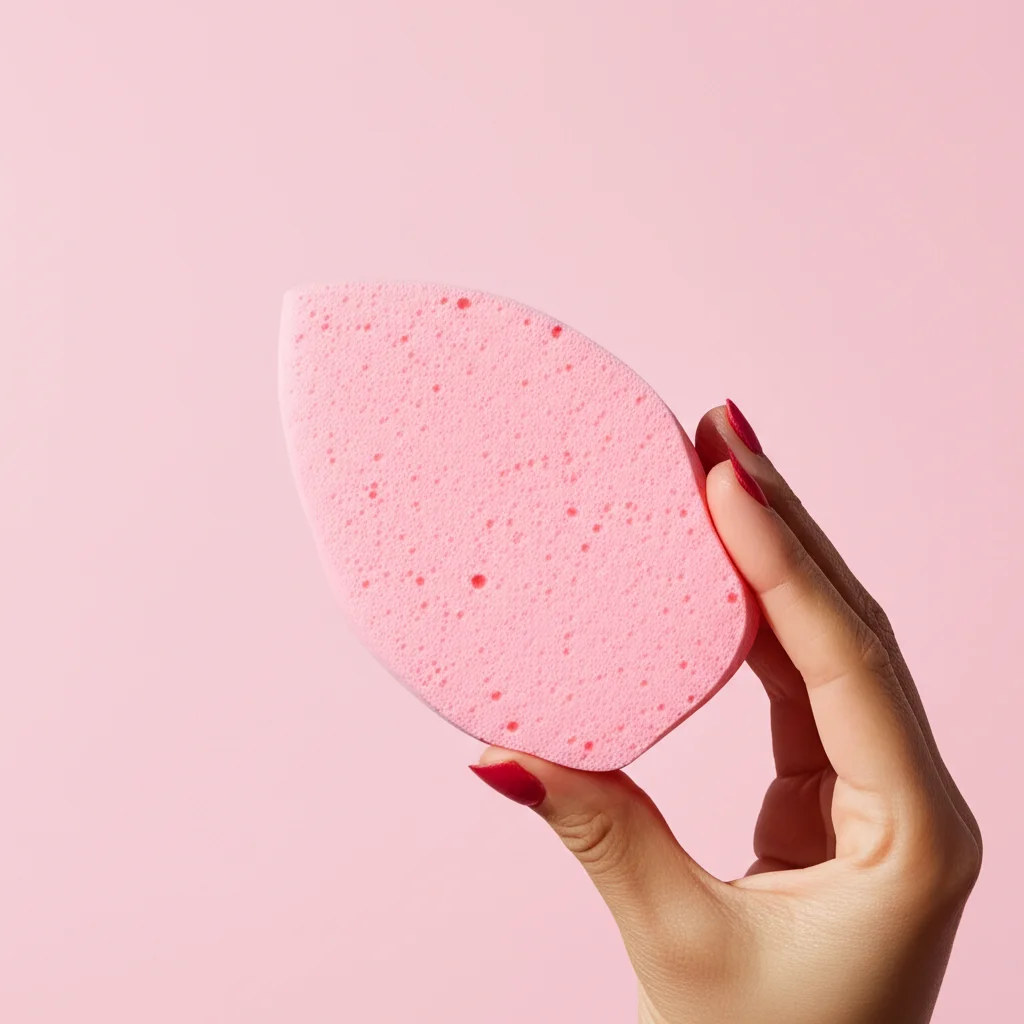· Todd Martin · Home Appliances, Cleaning Tips, Laundry Care · 15 min read
How To Clean Washer Smell

Banish Washer Odor: How To Clean Washer Smell Effectively
Have you ever opened your washing machine door, expecting fresh laundry, only to be met with a musty, stale odor? It is a common problem. Your washing machine, designed to clean clothes, can sometimes develop an unpleasant smell itself. This smell transfers to your clean laundry, defeating the purpose. I know how frustrating it feels to have clothes smell worse after washing.
I will show you how to clean washer smell using simple, effective methods. We will explore why these odors happen. We will cover step-by-step cleaning guides for both front-load and top-load machines. We will also look at natural cleaning agents like vinegar and baking soda. By the end, you will have all the knowledge to keep your washing machine fresh.
Takeaway
- Regularly clean your washing machine to prevent odors.
- Focus on gaskets, dispensers, and filters, which trap dirt and mold.
- Use vinegar, baking soda, or commercial washer cleaners for deep cleaning.
- Leave the washer door open after use to air out the drum.
- Avoid using too much detergent to prevent residue buildup.
Your washing machine smells due to mold, mildew, and detergent residue. To clean washer smell, run a hot cycle with white vinegar or a machine cleaner. Then, wipe down all accessible parts, including the detergent dispenser and door gasket. This removes buildup and eliminates the source of the odor.
Why Your Washer Smells: Understanding the Culprits
It is easy to assume our washing machines stay clean. After all, they constantly handle soap and water. However, modern washing machines, especially high-efficiency models, use less water. This can lead to issues. Less water means detergent and fabric softener residue may not fully rinse away. This residue builds up in various parts of the machine. It creates a food source for mold and mildew.
Mold and mildew thrive in dark, damp environments. The inside of your washing machine drum, especially around the door seal, provides ideal conditions. These fungi produce that characteristic musty, stale smell. If you do not clean the machine regularly, these odors become stronger. They also transfer to your laundry, making your clean clothes smell dirty.
Another cause is trapped lint and debris. Lint from clothes, along with small items like coins or tissues, can get caught in the washer’s filter or drain pump. Over time, this organic matter breaks down. It creates a foul smell. Hard water can also contribute. Mineral deposits can build up inside the machine. These deposits can trap dirt and detergent. This problem affects many households. Understanding these root causes helps us target our cleaning efforts.
Essential Tools and Cleaning Agents for a Fresh Washer
Before you start cleaning, gather the right supplies. You likely have most of these items already. For basic cleaning, you will need white distilled vinegar. Vinegar is an excellent natural disinfectant and deodorizer. It helps break down mineral deposits and soap scum. Baking soda is another powerful natural agent. It absorbs odors and provides a gentle abrasive action. Both are safe for your machine and the environment. You can learn more about how vinegar helps with cleaning in general. It works wonders on many surfaces, not just washers. Many people ask, “How to clean washer with vinegar?” This method is effective and cost-friendly. We will cover this in detail.
For tougher odors, you might consider commercial washing machine cleaners. Products like Affresh or OxiClean Washer Machine Cleaner are designed to tackle heavy buildup. They often contain enzymes that break down detergent residue, mold, and mildew. These products are easy to use. You simply run a cycle with the cleaner in an empty machine. If you want to know how to clean washer without Affresh, the vinegar and baking soda method is a great alternative.
You will also need some cleaning tools. A clean cloth or sponge is necessary for wiping surfaces. An old toothbrush or small brush helps reach tight spots, such as around the detergent dispenser or inside the gasket folds. A spray bottle can be useful for applying vinegar or other solutions. Finally, having some warm water and a bucket ready helps with rinsing and spot cleaning. These simple tools make the cleaning process much easier and more effective.
Deep Cleaning Your Front-Load Washer for Odor Removal
Front-load washing machines are known for efficiency. However, their design can make them more prone to developing odors. The rubber gasket around the door is a common culprit. Water, lint, and detergent residue collect in its folds. This creates a perfect breeding ground for mold and mildew. To start your deep clean, make sure the washer is empty.
First, focus on the door gasket. Pull back the folds of the rubber seal. You will likely find black mold, grime, and possibly small objects. Wipe this area thoroughly with a cloth dipped in a solution of equal parts white vinegar and warm water. For stubborn mold, you can spray the vinegar solution directly onto the mold. Let it sit for a few minutes. Then scrub it with a small brush or old toothbrush. This step is critical for eliminating the main source of odor. If you are specifically looking for advice on how to clean front-load washer gasket, this is the place to start.
Next, clean the detergent dispenser drawer. This drawer often collects sticky residue from liquid detergents and fabric softeners. Remove the dispenser drawer if possible. Soak it in warm soapy water for a few minutes. Use a brush to scrub away any buildup. Rinse it well and let it dry before putting it back. If you cannot remove it, wipe it down thoroughly with a damp cloth and a small brush. Many resources explain how to clean front-load washer comprehensively.
Now, it is time to clean the drum. Add two cups of white distilled vinegar to the detergent dispenser. Run an empty hot water wash cycle. This cycle helps sanitize the drum and break down internal residue. After the cycle finishes, sprinkle half a cup of baking soda directly into the drum. Run another empty hot wash cycle. The baking soda helps absorb remaining odors. Once finished, leave the door ajar to allow the drum to air dry completely. This prevents new mold growth.
Tackling Odors in Your Top-Load Washing Machine
Top-load washing machines, while generally less prone to gasket mold, can still develop unpleasant odors. These smells often come from detergent buildup and hard water deposits. They also come from mildew forming in hidden areas. Cleaning a top-loader is different but just as important. I always make sure to clean mine regularly.
To start, fill the washer drum with hot water to the highest level. Add four cups of white distilled vinegar to the hot water. Close the lid and let the machine agitate for a few minutes to mix the vinegar. Then, pause the cycle and let the vinegar water soak in the drum for at least an hour. This long soak allows the vinegar to break down soap scum, mineral deposits, and mold. If you want to know more about using vinegar, you can check out guides on how to clean washer with vinegar. This is a very common and effective method for both top-load and front-load machines.
While the water soaks, clean the machine’s exterior and the agitator. For top-load washers with an agitator, soap scum and lint can collect around its base. Wipe down the agitator with a cloth dipped in a vinegar-water solution. If your model allows, you can lift or remove the agitator to clean underneath it. Specific instructions on how to clean washer agitator can provide more detail. Also, wipe around the rim of the washer tub and the underside of the lid. These areas often accumulate grime.
After the soaking period, resume the wash cycle and let it complete. Once the cycle finishes, run a second empty hot water cycle. This time, add one cup of baking soda to the drum. The baking soda neutralizes any remaining odors and helps absorb leftover vinegar smell. After this second cycle, leave the washer lid open to allow the drum to air dry completely. This step is crucial for preventing future odor development and keeping the inside fresh.
Natural Cleaning Solutions: Vinegar and Baking Soda Power
When it comes to cleaning, I often turn to natural solutions. White vinegar and baking soda are my go-to choices. They are safe, inexpensive, and incredibly effective. They combat many types of dirt and odors around the house. For a smelly washer, these two ingredients work magic. They tackle the root causes of unpleasant smells without harsh chemicals.
Vinegar is an acid. This property allows it to dissolve mineral deposits and soap scum. These are common culprits for washer odors. It also has strong antibacterial and antifungal properties. This means it kills mold and mildew. These fungi are often responsible for that musty smell. When I use vinegar, I simply pour a few cups into the detergent dispenser or directly into the drum. Then, I run a hot wash cycle without clothes. The hot water helps the vinegar work more efficiently, distributing it throughout the machine’s internal components. This method is effective for a general deep clean and for targeting specific areas where buildup occurs.
Baking soda is a natural deodorizer. It absorbs and neutralizes odors rather than just masking them. It also acts as a mild abrasive, which helps scrub away grime. After a vinegar cycle, I like to follow up with baking soda. I sprinkle half to one cup directly into the empty drum. Then, I run another hot wash cycle. This combination is powerful. The vinegar cleans and sanitizes. The baking soda absorbs any remaining smells, including the vinegar scent itself. This two-step process leaves my washer smelling clean and fresh.
Beyond the cycle, you can use a vinegar and water solution in a spray bottle. This is perfect for wiping down the exterior surfaces of your washer. It also works for the inside of the door, the detergent dispenser, and the rubber gasket. If you find mold in other areas of your home, like the shower, vinegar is also a great solution. Check out guides on how to clean mold with vinegar. Regular use of these natural cleaners helps maintain a clean, odor-free washing machine.
The Gasket, Dispenser, and Filter: Often Overlooked Areas
When your washing machine smells, it is tempting to just run a cleaning cycle. However, some areas need direct attention. The rubber gasket, detergent dispenser, and drain pump filter are often overlooked. These spots accumulate grime, detergent residue, lint, and mold. They become major sources of foul odors. Neglecting these areas means the smell will quickly return, no matter how many cycles you run.
The gasket, also known as the door seal, is especially problematic in front-load washers. Its folds and crevices trap water, lint, and detergent. This creates a perfect environment for black mold and mildew. After every wash, I recommend wiping down the gasket. For a deeper clean, pull back the folds. Use a cloth or sponge dampened with a solution of warm water and white vinegar or a mild bleach solution (if safe for your machine). Scrub away any visible mold or residue. Pay close attention to the bottom part of the gasket, as water often pools there. A small brush or old toothbrush can help reach into tight spots. Consistent cleaning of the gasket prevents stubborn odors. Specific advice on how to clean front-load washer gasket highlights its importance.
The detergent dispenser drawer is another common hiding spot for residue. Liquid detergents and fabric softeners can leave behind a sticky film. This film attracts mold and bacteria. If your dispenser is removable, take it out. Soak it in warm, soapy water for about 15-20 minutes. Then, scrub it thoroughly with a brush to remove all buildup. Rinse it well and let it dry before putting it back. If it is not removable, use a damp cloth and a small brush to clean all accessible parts of the dispenser. Make sure to clean inside the dispenser housing too.
Finally, do not forget the drain pump filter. This filter traps lint, coins, and other small items that escape from your clothes. Over time, these trapped items can decompose and cause strong, unpleasant odors. The location of this filter varies by machine. It is often at the bottom front of front-load washers, behind a small access panel. For top-loaders, some models have a self-cleaning filter, others might have a removable lint trap in the agitator or drain. Check your owner’s manual for specific instructions on how to access and clean it. Before opening, place a shallow pan or towels underneath to catch any water. Remove the filter, clean off any debris, rinse it, and replace it. Cleaning this filter every few months helps prevent major odor issues. For specific brand information, like how to clean Whirlpool Cabrio washer filter, consult your manual or specific guides.
Preventing Future Washer Smells: Best Practices
Cleaning your washer is a good start. Keeping it smelling fresh requires ongoing prevention. I have learned simple habits make a big difference. Incorporating these practices into your laundry routine saves you from future deep cleaning headaches. It also extends the life of your machine.
First, always leave the washer door or lid open after each wash cycle. This allows air to circulate inside the drum. It helps the interior dry completely. Moisture is mold and mildew’s best friend. By letting the machine air out, you deny these fungi the damp environment they need to grow. This is especially important for front-load washers. Their sealed doors trap more moisture. If you cannot leave the door fully open, even a crack helps.
Second, use the right amount of detergent. Many people use too much detergent. More suds do not mean cleaner clothes. Excess detergent does not rinse away completely. It leaves a sticky residue inside your machine. This residue builds up on the drum, hoses, and seals. It becomes food for mold and mildew. Check your detergent’s instructions. Use high-efficiency (HE) detergent if you have an HE washer. These detergents produce fewer suds and are designed for lower water usage. Consider using less detergent than recommended, especially if you have soft water.
Third, run a cleaning cycle regularly. Even with good daily habits, residue can build up. I run a cleaning cycle once a month. You can use white vinegar, baking soda, or a commercial washer cleaner. This helps flush out any accumulating grime and disinfects the machine. Some modern washers have a “Clean Washer” or “Sanitize” cycle. Use this feature as it is designed for this purpose. For older models, a hot water wash cycle works well.
Finally, remove wet clothes from the washer promptly. Do not leave damp laundry sitting in the machine. This creates a highly humid environment inside the drum. It encourages mold and mildew to grow quickly. Transfer clothes to the dryer as soon as the cycle finishes. By following these simple steps, you keep your washing machine smelling fresh and extend its lifespan.
FAQ Section
Q1: Can I use bleach to clean my washing machine?
Yes, you can use bleach. Add half a cup of bleach to the detergent dispenser. Run an empty hot water cycle. Bleach is a strong disinfectant. It kills mold and mildew. However, do not mix bleach with vinegar. This creates dangerous chlorine gas. Always rinse thoroughly after using bleach.
Q2: How often should I clean my washing machine to prevent smells?
Aim to clean your washing machine every one to three months. This depends on your usage and water hardness. If you do many loads or live in a humid climate, clean it more often. Regular cleaning prevents mold and residue buildup. It keeps your clothes smelling fresh.
Q3: Why does my new washing machine smell?
Even new machines can develop odors. This might be due to residual manufacturing lubricants. More commonly, it is from leaving the door closed. Always leave the door ajar after use. Run a cleaning cycle with vinegar or a commercial cleaner to eliminate any initial smells.
Q4: Can using too much fabric softener cause washer smell?
Yes, using too much fabric softener can contribute to odors. Fabric softener leaves a waxy residue. This residue builds up inside the dispenser and drum. It traps dirt and provides a food source for mold and mildew. Use fabric softener sparingly or consider alternatives.
Q5: Is it safe to wash clothes immediately after cleaning the washer with vinegar?
Yes, it is safe to wash clothes immediately after cleaning with vinegar. Vinegar is a natural, non-toxic cleaner. Its smell dissipates quickly. If a faint vinegar scent remains, simply air out the washer for a short period. Your clothes will not pick up the smell.
Q6: What if the smell persists after cleaning?
If the smell persists, check less obvious spots. Inspect the drain hose for clogs or mold. Make sure the washer is leveled correctly, preventing water from pooling. You might also need to call a professional technician. They can check for deeper issues in the drain system or internal components.
Conclusion
A smelly washing machine is annoying. It makes your “clean” laundry smell less than fresh. But you now have the tools and knowledge to tackle this common problem. I showed you how to clean washer smell effectively. We explored the culprits like mold, mildew, and detergent residue. We discussed specific steps for both front-load and top-load machines. We highlighted the power of natural cleaners like vinegar and baking soda.
Remember to give special attention to often-missed areas. The gasket, detergent dispenser, and drain pump filter need regular cleaning. Incorporate simple habits into your routine. Leave the washer door open after use. Use the right amount of detergent. Run regular maintenance cycles. By doing these things, you will keep your washing machine clean and odor-free. A fresh washer means truly clean, fresh-smelling clothes every time. Take action today and reclaim your laundry’s freshness!
- washer smell
- clean washing machine
- laundry odor
- mold
- mildew
- front-load washer
- top-load washer
- cleaning tips





